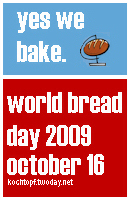I spent the weekend visiting my friend Kelly in Hollywood, Florida. It's a cute little town on the coast between Miami and Ft. Lauderdale. While I was visiting I did my best to try as many new beers as I could, and Kelly definitely aided me in the process!
Knowing my great love of beer and being the wonderful friend that she is, Kelly got me an assorted six pack of local beers (save one from CA, which she picked out because the label was cool). I drank these over the course of the weekend along with a few other brews out at bars/restaurants. I took notes on a few. Nothing incredibly remarkable, the Monk in the Trunk was my favorite by far.
Holy Mackerel Special Golden Ale Ft Lauderdale, FL
A- opaque golden color, like cloudy honey. Thin head with persistent lacing
S- smelled like a hefeweizen, banana, slightly floral, alcohol aroma.
T- bit of a sharp/sour tang at first, but overall mild flavor in spite of the alcohol content. still put me in the mind of a hefeweizen
M- slightly viscous and heavy on the edges of my tongue.
D- pretty well balanced, and goes down easier than one would expect from an 8.5% abv, but not really one that I'd drink again.
Hurricane Reef Pale Ale Melbourne, FL
A- Poured a golden honey color with a thin head that quickly dissipated but left some lacing. Visibly highly carbinated.
S- Not a very strong nose on this beer, either that or my own was stuffy. Malty perhaps.
T- light, very mild hop taste, slight spice taste
M- light, again very carbinated, kind of thin.
D- very drinkable, goes down quick and easy, perhaps the only upside of an otherwise kind of boring beer. I wouldn't go out of my way to find this one again, but it was neat to try it.
Monk in the Trunk Amber Ale Jupiter, FL
A- pours amber with golden hues, thin head that lingered a bit
S - sweet, malty nose, faint hops and some alcohol
T - had a coppery metallic tang that reminded me of some copper ales I've tried, otherwise malty and sweet
M- crisp, not over or under carbinated
D- definitely could have had a few of these, and would drink it again. it was a good, solid amber and organic as well!
Heavy Seas Peg Leg Imperial Stout, Maryland
I had this one at a restaurant, served from a bottle. I was really not impressed and then I gave the bottle a better look over and noticed that it said to serve before May 2009. Since I drank it in August, I figured it was 3-4 months past its prime and will blame the restaurant for now instead of the beer for my underwhelmed reaction. Perhaps I'll get a chance to try it again sometime.
A-dark but thin pouring with ruby notes and little to no head
S-roasted smells on the nose, coffee and chocolate perhaps, but very faint
T-yeasty taste, alcohol-sweet with a kind of stale malty flavor that lingered after
M- thinner than most russian imperial stouts i've had
D-definitely wouldn't have had another, for the abv and the taste. i'll have to try this on tap before i pass final judgment, but overall i thought it tasted bad













































